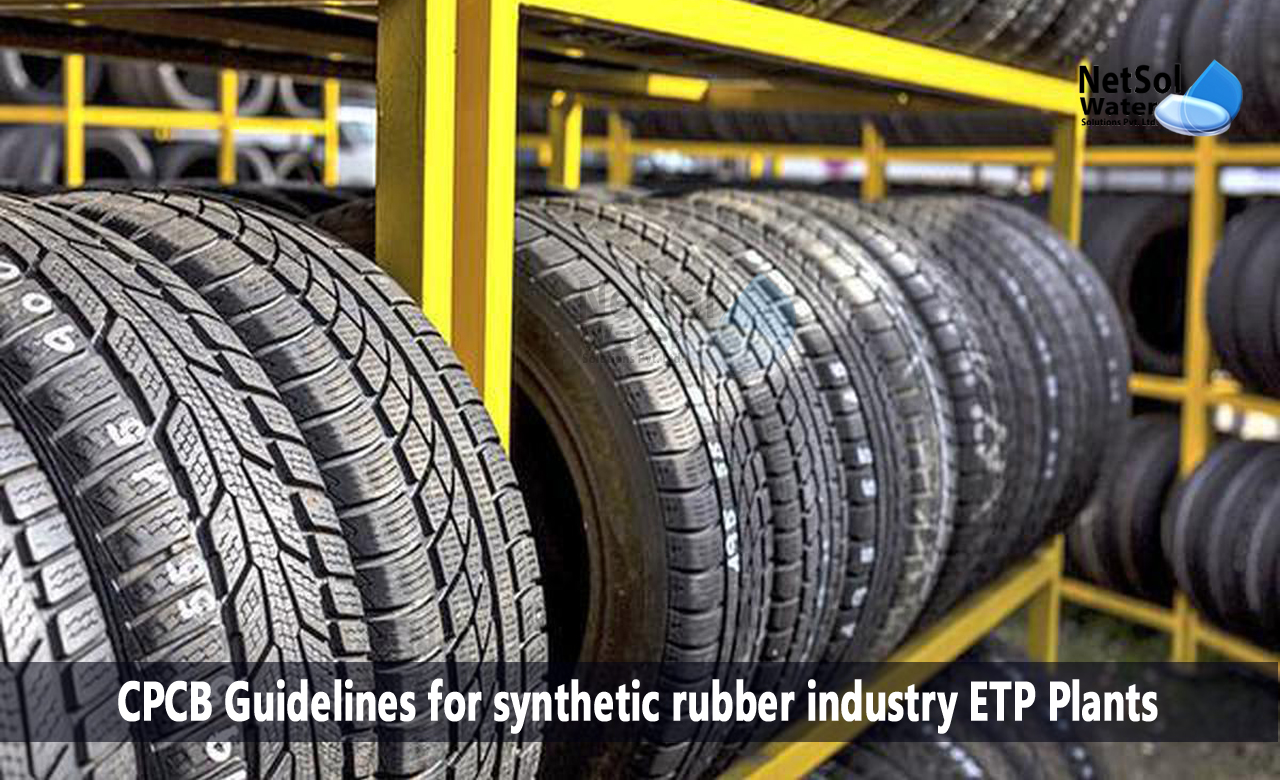Synthetic rubber is a type of synthetic elastomer. They're polymers made from petroleum by-products. In India, around 32 million metric tons of rubber is manufactured each year, with synthetic rubber accounting for two-thirds of that total.
Synthetic rubber, like natural rubber, has numerous applications in the automobile sector, including tires, door and window profiles, seals such as O-rings and gaskets, hoses, belts, matting, and flooring. They provide a variety of physical and chemical qualities, which might improve the dependability of a certain product or application.
In two important ways, synthetic rubbers out-perform natural rubbers: thermal stability and resistance to oils and similar chemicals. They are more resistant to oxidizing factors, like oxygen and ozone, which can shorten the lifespan of products like tires.
Let’s look at CPCB guidelines for synthetic rubber industry effluent treatment plants.
Water use in the synthetic rubber industry
Natural rubber (NR) processing is an industry that produces raw materials, used in the production of rubber industrial products, conveyor belts, rubber rollers, etc, automotive products (fan belts, radiator hoses, etc.), latex products (rubber gloves, toys, hygienic products, etc.), and many types of adhesives.
The natural rubber processing industry utilizes a lot of water and energy, as well as a lot of chemicals and other things. It also emits large volumes of waste and effluent.
Wastewater produced by the synthetic rubber industry
Wastewater is an unavoidable by-product of rubber processing: whatever processing processes are utilized to prepare latex goods; an aqueous liquid will always be produced as a by-product.
Disposal of these effluents into public water bodies can result in significant dissolved oxygen depletion, compromising the natural environment that supports the aquatic system.
Effluent characteristics of the synthetic rubber industry
When compared to the effluent discharge standard for industrial wastewater, the total dissolved solids (TDS), total suspended solids (TSS), total solids (TS), ammonia, and phosphate are all excessive. The biological oxygen demand (BOD) and chemical oxygen demand (COD), respectively, indicate that the wastewater is polluted.
CPCB Guidelines for synthetic rubber industry ETP Plants
When discharged into inland surface waters, the concentration in the effluents must not exceed milligrams per liter (except for color and pH).
|
Parameter |
Value |
|
Colour |
Absent |
|
pH |
5.5-9.0 |
|
BOD (Biochemical Oxygen Demand at 27o C) |
50 |
|
Chemical Oxygen Demand |
250 |
|
Oil and grease |
10.0 |
Is the effluent from the synthetic rubber industry a concern?
The increasing global concern for the environment demands that wastes should be properly managed, in order to minimize and possibly eliminate their potential harm to public health and the environment.
Biodegradation is the process of utilizing indigenous microorganisms, for the degradation of complex organic matter into simpler ones.
Manufacturer of effluent treatment plants for synthetic rubber industry
Netsol Water offers a wide range of sophisticated wastewater treatment solutions, such as water softeners, wastewater treatment plants, sewage treatment plants, RO Plants, as well as effluent treatment plants for various industries, including the synthetic rubber industry.
Netsol Water is Greater Noida-based leading water & wastewater treatment plant manufacturer. We are industry's most demanding company based on client review and work quality. We are known as best commercial RO plant manufacturers, industrial RO plant manufacturer, sewage treatment plant manufacturer, Water Softener Plant Manufacturers and effluent treatment plant manufacturers. Apart from this 24x7 customer support is our USP. Call on +91-9650608473, or write us at enquiry@netsolwater.com for any support, inquiry or product-purchase related query.



